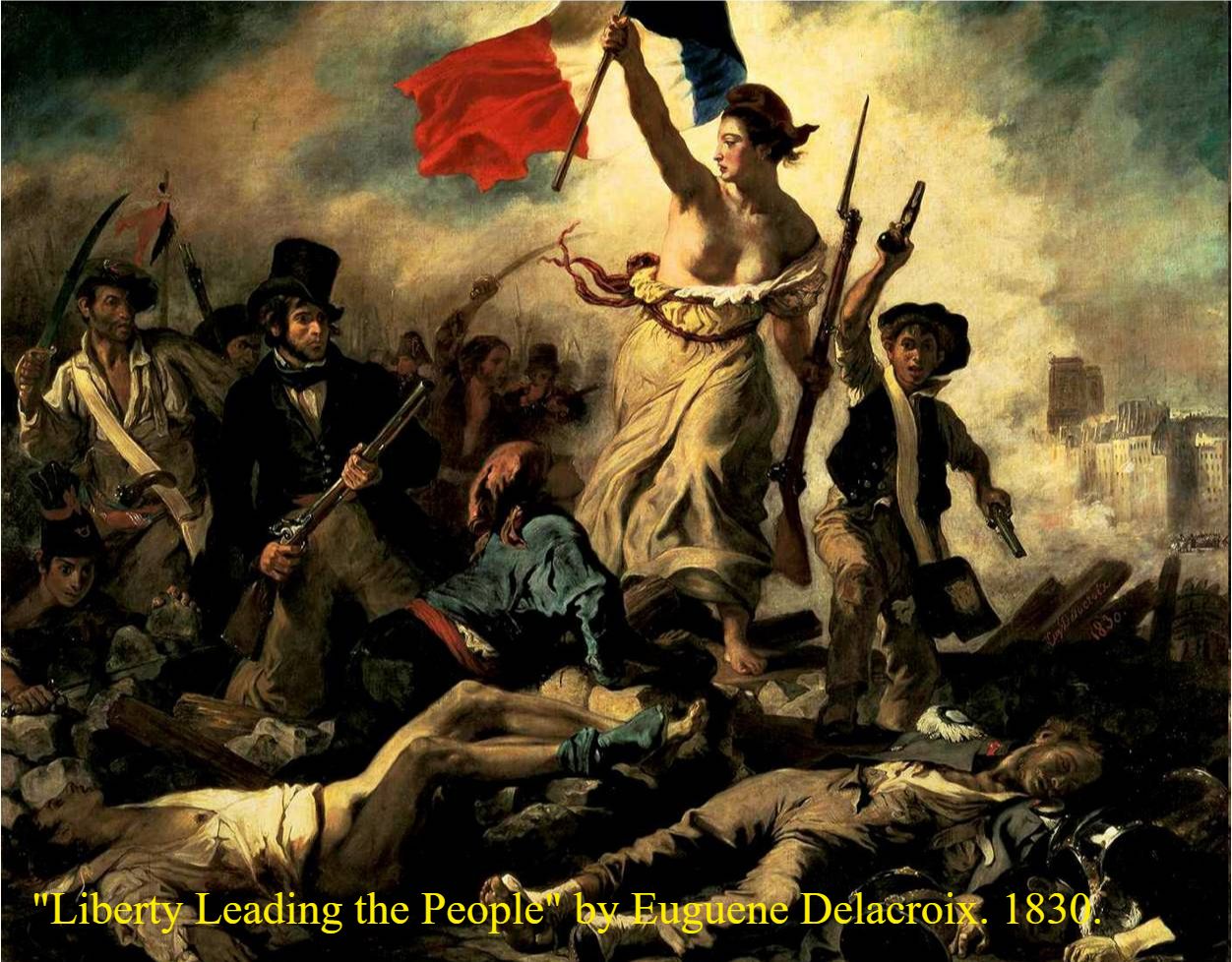Romanticism, materialism, and idealism overlapped as strands of thought in a period of rapid change. Romantics rejected the narrow optimism and mechanistic world of Enlightenment rationalists. The style of the romantics was imaginative, emotional, and haunted by the supernatural and by history. They stressed the individual and emotional ties to the past.
In literature and music, romanticism triumphed. In Germany, the Sturm and Drang movement and in England the poetry of Byron, Shelley, Keats, and others symbolized the romantic protest. Romantic musicians renounced classical rules and sought out popular ballads and tales of the past.
In the fine arts, romantics shared the stage with neoclassicists. In architecture, neoclassical styles gave way to the Gothic revival. In philosophy, Hegel proposed a theory of history as a dialectical process, an organic process of growth and development.
Politically, reactionaries were in power after 1815. The writings of Burke formed the foundation for the reconstruction of Europe. Conservatives believed society required orders and classes. The forces of tradition and political realism were epitomized by Metternich, Austrian foreign minister from 1809 to 1848.
At the Congress of Vienna, European leaders met to rebuild Europe with conservative underpinnings. Metternich, Alexander I, Castlereagh, and Talleyrand sought to restore the balance of power. Dynastic and territorial questions were settled on the principle of legitimacy. The Quadruple Alliance was formed to hold periodic meetings to maintain the peace of Europe.
The spirit of 1789 persisted, however. In 18201823, revolutions broke out in Spain, Portugal, and Naples. Revolutionaries fought to abolish the privileges of the nobility and clergy, establish representative assemblies, and write constitutions.
Nationalist aspirations led to independence movements in Serbia and Greece. With the aid of Britain, France, and Russia, Greek nationalists eventually prevailed.
Revolutions erupted again in 1830. In France, riots in Paris against the reactionary forces of Charles X led to a revolution in which the French opted for a constitutional monarchy under Louis Philippe. A nationalist revolt in Belgium succeeded in establishing a separate, independent nation whose neutrality was guaranteed in 1839. Revolts in Poland, Italy, and Germany failed, thereby widening the split between the more liberal governments of western Europe and the repressive regimes in eastern Europe.
In 1848 revolutions inspired by nationalist and liberal agitation again rocked Europe. An economic crisis was the catalyst for revolution in France. During the June Days, Paris was the scene of the first large-scale outbreak of class warfare. Using the magical name of his famous uncle, Louis Napoleon was elected president of the Second Republic.
In Italy and Germany, nationalist movements seeking unification failed. However, Piedmont emerged as the leader of Italian nationalist liberal forces.
In the Habsburg domain, revolts at first immobilized the government, but the Habsburgs soon reasserted their control. Moreover, the government played on the mutual distrust among the many nationalities to divide and conquer the rebel forces. Although the revolutions of 1848 failed, they left a legacy to be fulfilled later in Italy and Germany.

